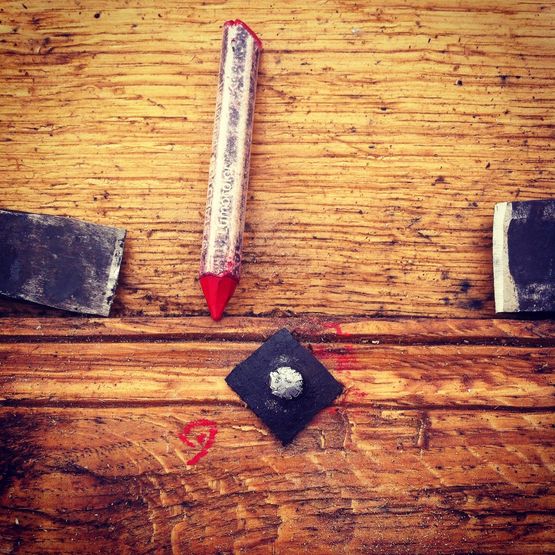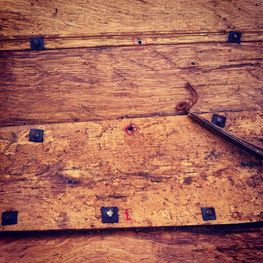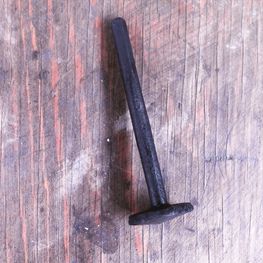During the Viking and Early Middle Ages, the majority of iron produced in Denmark was made from bog ore. There are many iron smelters around Denmark today who have worked with this process for years and know a great deal about the tricks and techniques involved. However, often these smelting experiments end with the production of the raw iron, and don't continue to include an analysis of how the iron behaves over a longer period of time. For us here at the Viking Ship Museum, that's almost the most interesting aspect of the whole experiment: how does bog iron react when used in a maritime context?
So, in order to explore that question, the smelters drawn up a detailed documentation plan that allows us to trace the production of each individual rivet from the very start of the smelting process, right up until it is riveted in place on the Gislinge Boat. The blacksmiths and boatbuilders have also worked out a documentation plan that which details the following for each individual rivet:
- Amount of time used to produce it
- The number of layers in the iron (the quality of the iron changes depending on the number of times it is folded and hammered)
- The rivet's overall weight
- The weight of the section that's clipped off
- Description of the riveting process (easy/difficult/comments on behaviour of the iron etc)
- Position on the boat
This means that we will be able to trace the performance of each individual rivet, right up until the day it needs to be replaced. Together with Mads and Jonas, Martin has made a plan about where the rivets should be positioned on the boat. It's been decided that they'll be placed both above and below the waterline in specific rows (if you imagine cross-sections being taken across the hull) but also along the length of entire strakes. In this way, we can explore not only how well (or not...) the rivets perform in relation to corrsion, but also how they behave when faced with the strains and strsses that rowing and sailing place on a clinker-built hull.
So far, 8 rivets have been used and the main reaction is that it's a much harder iron than that the boatbuilders are used to working with, but that they can be clenched - it just requires a little more muscle-power than usual.
As to how they'll perform in the long term? Well, we'll have to just wait and see...
» <link https: www.facebook.com external-link-new-window external link in new>Follow the project on Facebook...
» <link https: instagram.com vikingshipmuseum external-link-new-window external link in new>Follow the project on Instagram...


